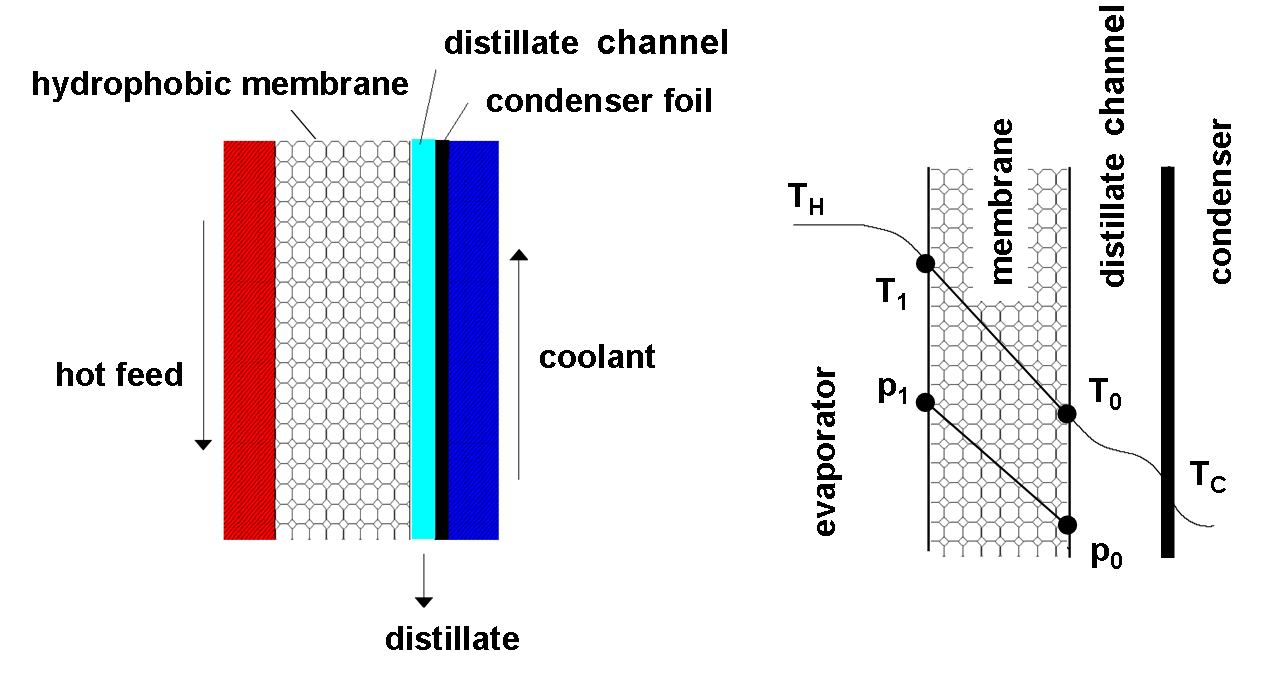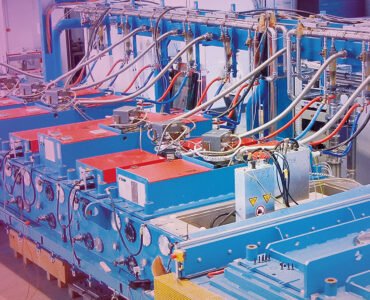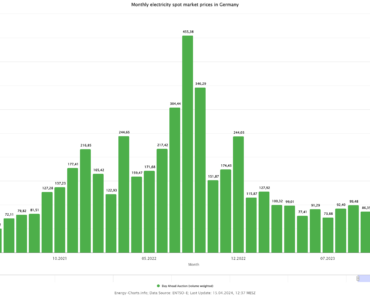Just after the end of the summer holidays, many people have happy memories of their beach holiday. For the local population, however, seawater unfortunately often doesn’t mean enough water. At least not water that is suitable for use by people. Salt, pollutants and wastewater make this raw material that is essential to life impure. Researchers at Fraunhofer ISE – including myself – have been working for many years to develop innovative methods for solar water treatment.
Even if you might ask at first why work on water treatment is conducted at a Fraunhofer Institute focusing on “Solar Energy Systems”, in fact, the combination of the two fields of research makes a lot of sense. Precisely in areas with a large amount of solar radiation, there is often a particularly acute shortage of water. Also, solar energy is available where no power grid is in place and the infrastructure is very weak, but where people are living who need clean drinking water. It therefore made sense to develop the entire desalination technology alongside the solar technology and in doing so, to design and coordinate the whole process on one site.
Key technologies: membrane distillation and reverse osmosis
The key areas of interest in the field of water treatment at Fraunhofer ISE are membrane distillation (MD) and reverse osmosis (RO).

Put simply, the membrane distillation method functions like a Gore-Tex rain jacket, where humidity warmed by the body can evaporate outwards, while at the same time, fluid is unable to penetrate into the jacket. A membrane distillation plant is built according to a similar principle. Using solar thermal energy or other waste heat, salt water, which is fed into the plant, is heated. In a similar way to the Gore-Tex jacket, the structure contains a hydrophobic membrane with a pore size of approximately 0.2 µm, which allows molecular water vapor through while repelling fluid water. On the other side of the membrane, coolant is guided along behind a condenser layer. The water vapor collects as permeate on the condenser layer and can be discharged as distilled drinking water. Concentrated salt water and solid substances remain as retentate. During the condensation process, heat is released which is transferred to the coolant medium and which thus serves to pre-heat the salt water within the circuit.


By contrast, reverse osmosis, as the name already suggests, is based on the reversal of the osmosis process. Here, two fluids, in our case salt water and drinking water, are separated from each other by a semi-permeable solution diffusion membrane. By applying mechanical pressure to the salt water, the strong binding forces between the water and the salt are broken and the molecules are forced to travel counter to their osmotic dissemination direction. The osmotic pressure which needs to be overcome as a minimum increases approximately proportionate to the salt content and is around 24 bar for seawater. In comparison, a car tire has around 4 bar, and a bicycle tire has around 2-6 bar. In order to press the separated freshwater through the membrane, the pressure levels typically used in desalination plants are around 60 bar. Here, 30-50% of the water passes through the membrane, while 50-70% of concentrated brine is retained.
Advantages and disadvantages of the methods
Both methods have advantages and disadvantages, and which method is ultimately selected depends strongly on the framework conditions.
Membrane distillation is a thermal method in which very pure water is created through evaporation. Waste heat or solar thermal energy can for example be used to power the plant. By contrast, reverse osmosis requires only electrical energy, which can be produced using photovoltaics in order to generate the mechanical pressure. The energy requirement increases with the saline content and is around 3.5 kW/m3 for seawater. Compared to a solar thermal energy-driven MD system, the PV-RO is less costly; however, if cost-free waste heat is available, the MD is an efficient alternative. The disadvantage of RO compared to MD is that the purity of the water obtained is of a lower quality, since with this method, salts always also travel through the membrane. Additionally, due to the increase in pressure, the RO reaches the limits of its capabilities with very high salt content, while the MD can be operated almost up to saturation level of the saline solution.
The RO has already become established in many areas of industrial water treatment, while for the MD, there is very high potential precisely in areas such as the treatment of concentrated wastewater, where the RO can no longer be operated. Waste heat is also frequently available in an industrial environment.
Possible areas of application in the industrial environment
The technologies related to membrane distillation are generating particular interest in countries such as China and India. There, the regulations regarding the introduction of wastewater are in some cases so stringent that from some industrial centers, no discharge of fluid wastewater is permitted. With regard to the goal of achieving “zero liquid discharge”, in other words, the complete separation and disposal of solid substances, the membrane distillation method can make a key contribution in the future. In the BMBF project “HighCon”, which is coordinated by TU Berlin, Fraunhofer ISE is working together with several other partners from industry and research to study and develop technologies precisely for this process.
One particularly interesting project is currently being implemented by the company MAHLE in collaboration with Fraunhofer ISE and the TU Hamburg Harburg, in which an entirely new membrane distillation module has been developed by Fraunhofer ISE and is currently being used in tests in the shipping industry in order to produce drinking water. The method is suited to this field since waste heat from diesel engines is available in large amounts. The plant was installed on a container ship in Rotterdam in May 2016, and has since then been travelling all over the world.


Potential of the research fields
Unfortunately, funding bodies in Germany have not yet recognized the potential of the research field. Currently, around 95 million m3 of water is desalinated every day, and the amount is increasing exponentially. The Arabian Peninsula, Algeria and the entire MENA region are building huge plants, although France, due to its former colonies, is far ahead in this area. Countries which are investing particularly large amounts into research and development in this field include Israel, Singapore, Abu Dhabi and Saudi Arabia. Singapore and Israel in particular already have highly sophisticated water systems for which both seawater desalination and water reuse technologies are used on a large scale.
As well as its use in the industrial environment, there is a particular kind of motivation behind the provision of methods for preparing drinking water. If you look at how quickly drinking water resources are declining and the degree of importance of water in global conflicts, it is obvious that there are benefits from conducting research in this field that extend beyond purely economic factors. It is and remains an important goal to take the concept of decentralized water preparation systems with renewable energies a further step forward. Then, with the technologies described, there is hope that the local population in arid regions really will have more water without additional fossil fuel consumption, instead of seawater which is not fit for consumption.














Great article regarding industrial solar water treatment its very useful.Thanks for sharing.